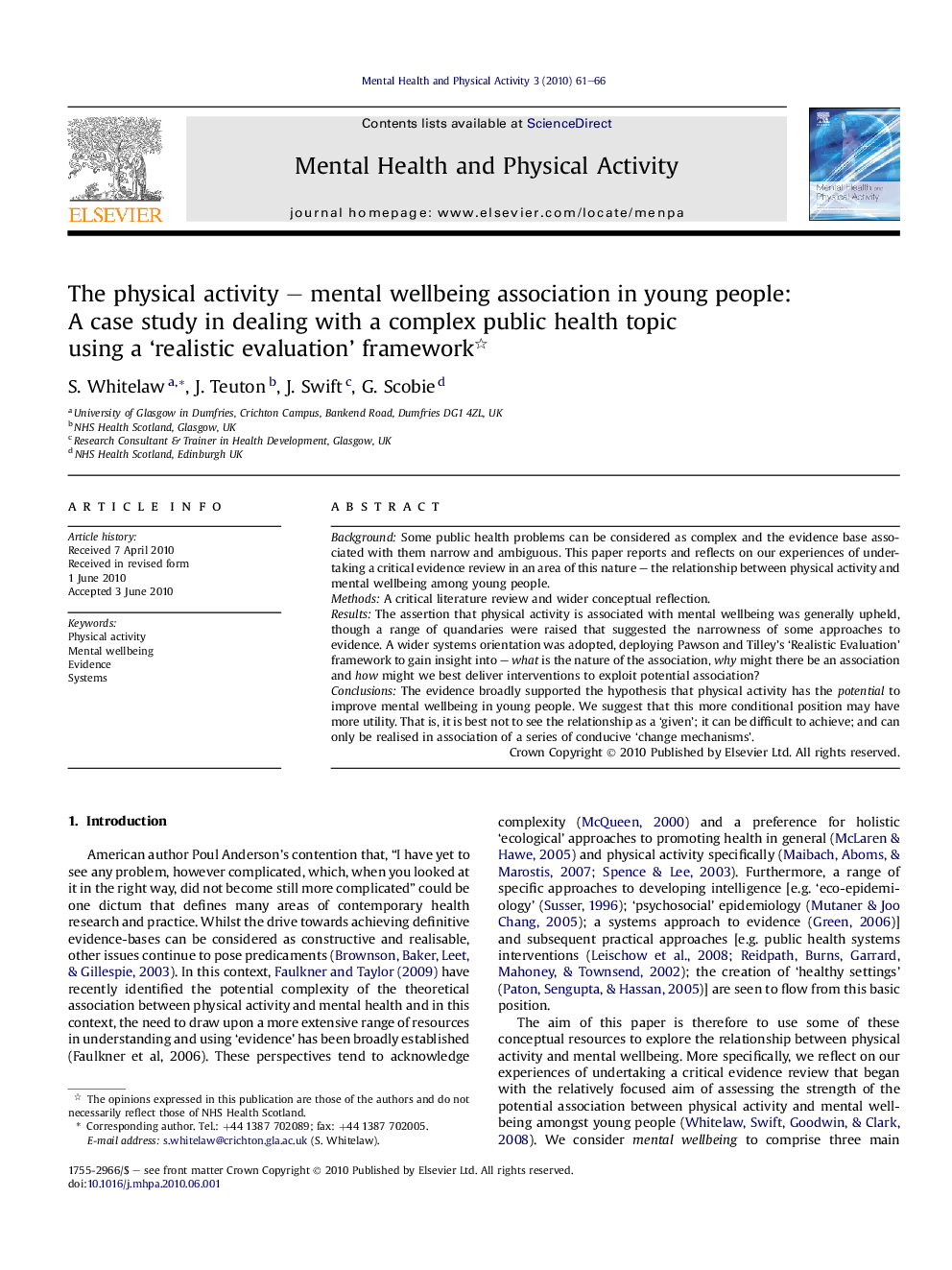| کد مقاله | کد نشریه | سال انتشار | مقاله انگلیسی | نسخه تمام متن |
|---|---|---|---|---|
| 913637 | 918334 | 2010 | 6 صفحه PDF | دانلود رایگان |

BackgroundSome public health problems can be considered as complex and the evidence base associated with them narrow and ambiguous. This paper reports and reflects on our experiences of undertaking a critical evidence review in an area of this nature – the relationship between physical activity and mental wellbeing among young people.MethodsA critical literature review and wider conceptual reflection.ResultsThe assertion that physical activity is associated with mental wellbeing was generally upheld, though a range of quandaries were raised that suggested the narrowness of some approaches to evidence. A wider systems orientation was adopted, deploying Pawson and Tilley’s ‘Realistic Evaluation’ framework to gain insight into – what is the nature of the association, why might there be an association and how might we best deliver interventions to exploit potential association?ConclusionsThe evidence broadly supported the hypothesis that physical activity has the potential to improve mental wellbeing in young people. We suggest that this more conditional position may have more utility. That is, it is best not to see the relationship as a ‘given’; it can be difficult to achieve; and can only be realised in association of a series of conducive ‘change mechanisms’.
Journal: Mental Health and Physical Activity - Volume 3, Issue 2, December 2010, Pages 61–66